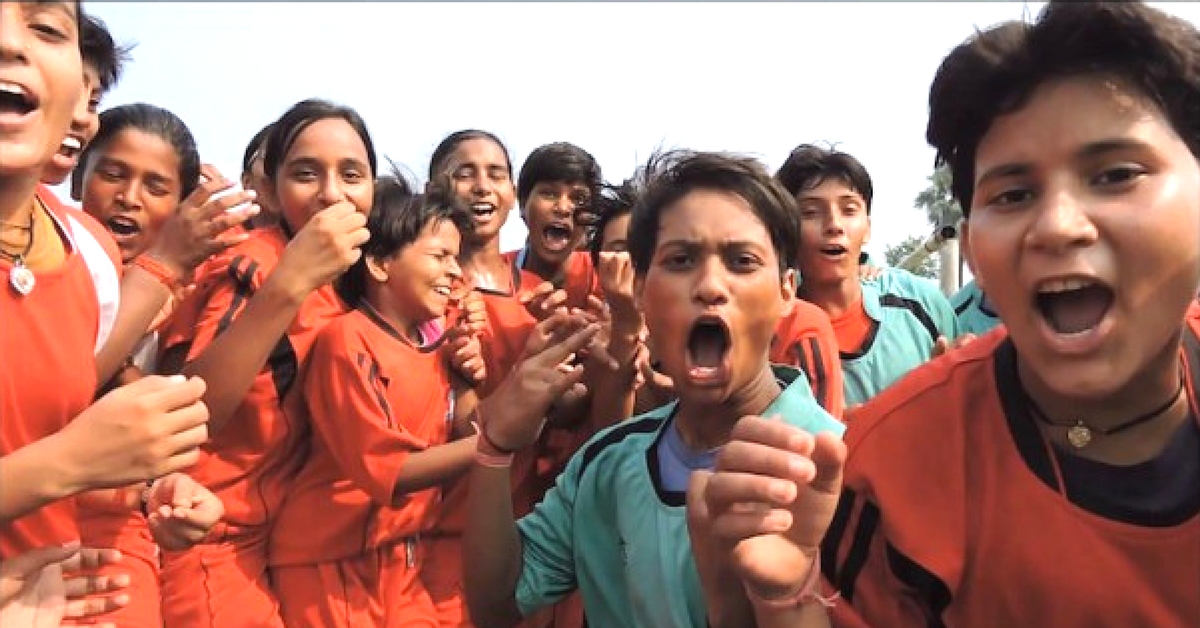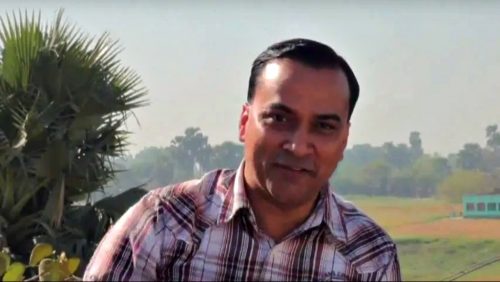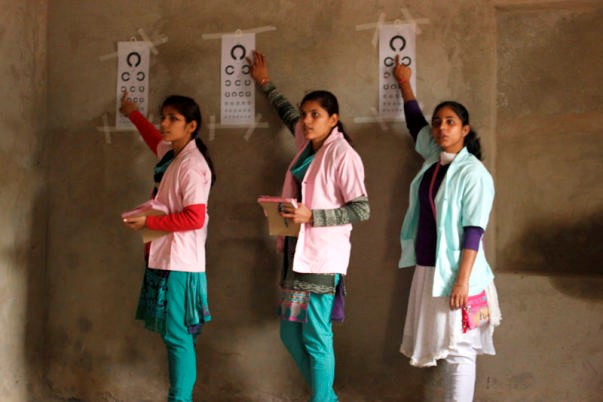How Football Is Letting This Eye Hospital Battle Social Evils and Transform Lives in Rural Bihar
The Akhand Jyoti Eye Hospital's Football to Eyeball program seeks to use the sport as an avenue to facilitate better career prospects for young underprivileged girls.

On a chance visit to his ancestral village in rural Bihar (Kishanganj district), Mritunjay Tiwari, a businessman, saw a father selling off his girl child for a mere Rs 1000. This encounter shook his conscience.
He realised that his lived urban experience was nowhere close to the problematic reality that governed much of rural Bihar. People lived in extreme poverty, where assistance from the State was nowhere in sight.
This incident kickstarted his journey, and his inspiration came from Pandit Shriram Sharma Acharya, a prominent 20th-century social reformer. As a disciple and his grandson, Tiwari felt obligated to leave the comforts of urban life and work towards fulfilling Pandit Shriram’s seven areas of focus for social change—health, education, empowerment of women, eliminating superstitions and social evils, promoting spirituality and the spirit of entrepreneurship.

Inspired by his spiritual guru’s message, Tiwari began exploring Bihar’s hinterlands and got himself involved in activities aimed at social change – from administering polio drops to a door-to-door campaign against the exploitative practice of dowry.
In 2004, he moved to a small, remote village called Mastichak located in Bihar’s Saran district. “With no electricity and numerous blind patients, the place was purblind in both social and economic terms,” says Tiwari. “Cases of female infanticide, foeticide and child marriage were common.”
From setting up an eye treatment camp for the locals with 10 beds in a local temple’s premises, Tiwari went on to develop the now famous Akhand Jyoti Eye Hospital (AJEH) in Mastichak, which currently has a capacity of 350 beds. It is one of the largest eye hospitals in the country, conducting an average of 65,000 surgeries annually, of which 80% are done free of cost for the rural poor.

Today, AJEH houses the most comprehensive eye care facility in Bihar, and their operations are firmly entrenched in a rural setup.
Despite all the success, Tiwari recalled a little girl dropping out of school to look after her blind father. This had happened before he set up the hospital. “It kept nagging at me. That and the fact that in a lot of places in Bihar, girls are still being sold. I wanted to do something for them,” he said.
In response to these concerns, he felt that AJEH should become more than just an eye hospital. Tiwari soon started the Football to Eyeball Programme, which was an attempt at reaching out to young girls from rural areas in the Saran district.
“This unique program uses football as an icebreaker to negotiate further opportunities for young girls,” says Anirban Banerjee, General Manager at AJEH. “Through this program, young girls between the age of 12-16, who aspire to become professional footballers or optometrists or both, are nurtured by Akhand Jyoti Eye Hospital .”

The program works on the principle of “teach football to the girls and draw them out of their homes,” says Anirban. AJEH’s base centre functions as the hub for this program. Girls from some of the most backward areas of this country reside in a hostel in the hospital’s base centre, which provides accommodation, food, and other necessary facilities.
Despite the goodwill that AJEH had generated, it was a tough task convincing parents to let their daughters out and play football. “It was not easy. People felt that I was trying to shake the system. I started getting a lot of threats and was even given police protection, but I persevered. I knew deep down that what I was doing was the right thing, so I refused to step back,” Tiwari recalls.
After admitting the first student, which itself was a six-month long process, others began to follow and the community was ultimately supportive.
Football is introduced to the girls in a phased manner (twice a week for 45 minutes) under the supervision of a trained physical instructor. If a girl develops a genuine interest in the sport, the hospital selects her for full-time football training.
“The entire cost of education, training, and living is undertaken by Akhand Jyoti Eye Hospital, to help establish these girls as role models. In an environment that hinders their progress and development at every turn, the story of these girls stands as an inspiration to others” says Anirban.
Although football does not offer the girls long-term career opportunities in India, a student who distinguishes herself at the state, national or international level by the age of 17 is entitled to a government job under the State’s sports quota. Some of the girls who have trained at the centre have gone on to play at the State and National level, cutting across various age groups.
“These girls can simultaneously opt for a four-year Bachelor course in Optometry after completing their standard XII (A level),” adds Anirban. “A qualified optometrist after that can choose to practice at the hospital or her clinic.”

Both avenues offer significant opportunities for a sustainable livelihood with the bonus of improving gender parity in society. The parents of these girls, in fact, execute a bond undertaking not to marry the girl before the age of 23.
Read also: Treating 2 Lakh Eyes in a Year! Here’s How India Makes It Happen
So has the ‘Football to Eyeball’ program created a dent in society?
“The girls at AJEH have challenged and broken down gender barriers in an extremely orthodox and patriarchal society. They have stood against society’s ridicule. Girls who have passed out of AJEH perform as qualified optometrists and are pioneers in the hospital’s blindness eradication program. They treat over 200 patients each day, bringing back hope and dignity to their communities. In the next five years AJEH is specifically looking to create and support 22 homegrown women entrepreneurs who would continue to carry on the mission of AJEH,” says Anirban.

Despite little help from the State for this initiative, AJEH has managed to create a significant difference in the lives of these girls and will hope to do the same for others in the years to come.
Read also: 16-Year-Old Girl Prodigy Develops AI to Diagnose Grandfather’s Eye Disease
However, the hospital requires substantial financial assistance to pursue their ‘Football to Eyeball’ program further.
If you wish to donate to AJEH’s Football to Eyeball Program on the crowdfunding site Milaap, you can click here.
Like this story? Or have something to share? Write to us: [email protected], or connect with us on Facebook and Twitter.
NEW: Click here to get positive news on WhatsApp!
If you found our stories insightful, informative, or even just enjoyable, we invite you to consider making a voluntary payment to support the work we do at The Better India. Your contribution helps us continue producing quality content that educates, inspires, and drives positive change.
Choose one of the payment options below for your contribution-
By paying for the stories you value, you directly contribute to sustaining our efforts focused on making a difference in the world. Together, let’s ensure that impactful stories continue to be told and shared, enriching lives and communities alike.
Thank you for your support. Here are some frequently asked questions you might find helpful to know why you are contributing?


This story made me
-
97
-
121
-
89
-
167











